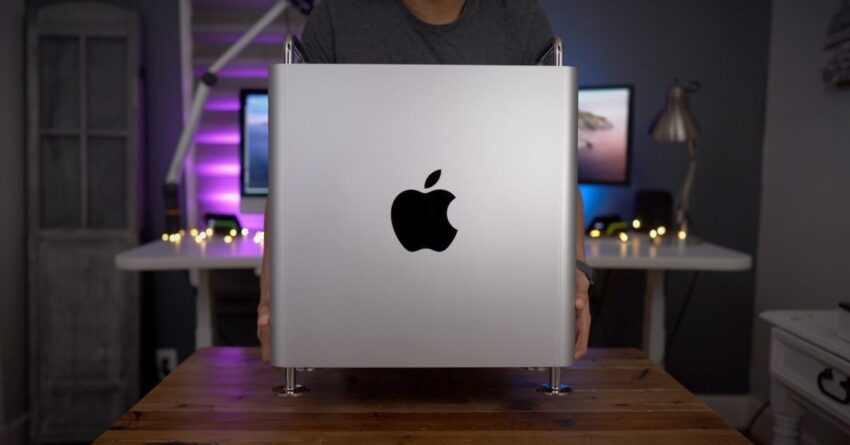
apple has no plans to release a Apple has reportedly no immediate plans to release a new Mac Pro, according to a recent newsletter from Bloomberg’s Mark Gurman.
apple has no plans to release a
Current Status of the Mac Pro
In his latest edition of the Power On newsletter, Gurman indicates that Apple has “largely written off the Mac Pro.” This statement comes as a surprise to many in the tech community, particularly given the Mac Pro’s position as Apple’s flagship desktop computer aimed at professionals in creative industries, software development, and other high-performance computing tasks. The last significant update to the Mac Pro occurred in 2023, when Apple introduced the M2 Ultra chip, a powerful processor designed to meet the demands of professional users.
The M2 Ultra chip brought substantial improvements in performance and efficiency, making the Mac Pro a compelling option for users requiring high computational power. However, the lack of forthcoming updates raises questions about the future direction of Apple’s professional hardware lineup.
Historical Context of the Mac Pro
The Mac Pro has a storied history within Apple’s product ecosystem. Initially launched in 2006, the Mac Pro has undergone several transformations, each time reflecting the evolving needs of its target audience. The 2013 model, known for its cylindrical design, was a radical departure from traditional desktop aesthetics but faced criticism for its limited upgradeability. In response, Apple returned to a more modular design with the 2019 Mac Pro, allowing users to customize their machines with various components, including graphics cards and storage options.
The 2023 update, featuring the M2 Ultra chip, was seen as a significant step forward, particularly for users engaged in video editing, 3D rendering, and other resource-intensive tasks. However, the market for high-end desktops has been shrinking, as many professionals are increasingly opting for laptops that offer portability without sacrificing performance. This trend may have influenced Apple’s decision to deprioritize the Mac Pro in its product roadmap.
Market Trends and Implications
The decision to not prioritize the Mac Pro could be indicative of broader market trends affecting desktop computers. According to various industry reports, the demand for traditional desktop computers has been declining, particularly in the wake of the COVID-19 pandemic, which accelerated the shift towards remote work and mobile computing solutions. As professionals adapt to new workflows, the need for powerful desktop machines may diminish, leading companies like Apple to reconsider their product strategies.
Additionally, the rise of cloud computing and software-as-a-service (SaaS) solutions has made it easier for users to perform high-performance tasks without relying on local hardware. This shift could further reduce the demand for high-end desktops like the Mac Pro, prompting Apple to focus its resources on more lucrative segments, such as the MacBook lineup and iPad Pro.
Stakeholder Reactions
The news of Apple’s decision to deprioritize the Mac Pro has elicited mixed reactions from stakeholders. Professional users who rely on the Mac Pro for their work may feel disappointed, as they have come to expect regular updates and improvements to the hardware. Many in the creative industries, including video editors, graphic designers, and software developers, have long viewed the Mac Pro as an essential tool for their workflows.
On the other hand, some industry analysts suggest that Apple’s focus on laptops and other mobile devices may be a strategic move to align with changing consumer preferences. As more users prioritize portability and versatility, Apple’s decision to concentrate on these areas could prove beneficial in the long run.
Feedback from Professionals
Feedback from professionals who use the Mac Pro has been varied. Some users express frustration over the lack of updates, fearing that their investment in high-end hardware may not yield long-term benefits. Others, however, acknowledge that the M2 Ultra chip has significantly improved performance, making the current model capable of handling demanding tasks for the foreseeable future.
Furthermore, some professionals are exploring alternative solutions, including custom-built PCs and other high-performance workstations that may offer better upgrade paths and value for their investment. This trend highlights the competitive landscape that Apple faces in the high-end computing market.
Future of Apple’s Professional Hardware
While the immediate future of the Mac Pro appears uncertain, it raises questions about the overall direction of Apple’s professional hardware offerings. The company has made significant strides in its MacBook lineup, particularly with the introduction of the M1 and M2 chips, which have garnered praise for their performance and efficiency. This success may lead Apple to continue focusing on laptops and portable devices, potentially sidelining desktop models like the Mac Pro.
Additionally, Apple’s recent foray into augmented reality (AR) and virtual reality (VR) technologies may signal a shift in priorities. As the company invests in new technologies, it may choose to allocate resources away from traditional desktop computing to explore innovative solutions that align with future trends.
Conclusion
In summary, the news that Apple has no immediate plans for a new Mac Pro raises significant questions about the future of the company’s professional hardware lineup. The Mac Pro, once a cornerstone of Apple’s desktop offerings, now appears to be in a state of limbo as the company navigates shifting market dynamics and evolving consumer preferences. While the M2 Ultra chip has provided a powerful solution for current users, the lack of updates may prompt professionals to explore alternative options in an increasingly competitive landscape.
As Apple continues to focus on its MacBook lineup and other innovative technologies, it remains to be seen how the company will address the needs of professional users who rely on high-performance desktop solutions. The Mac Pro’s future may ultimately depend on the broader trends in computing and the company’s ability to adapt to changing market demands.
Source: Original report
Was this helpful?
Last Modified: November 17, 2025 at 7:37 am
1 views














